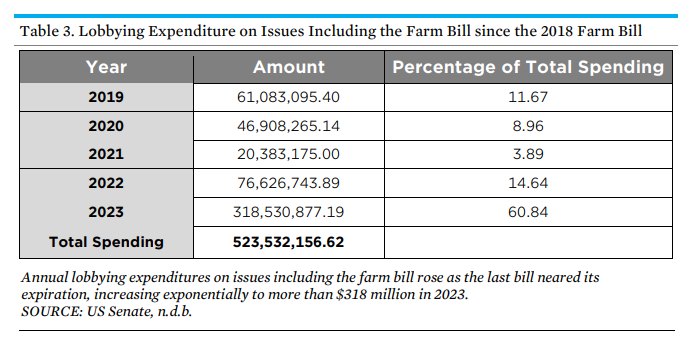By Anne Schechinger
Between 2021 and 2023, farmers across the country may have dipped into three types of taxpayer-funded federal farm support programs to collect more than $55.2 billion, according to EWG’s newly updated Farm Subsidy Database.
The astounding amount of money in Department of Agriculture payments during these three years comes from four programs: crop insurance, two traditional commodity programs and a new farm subsidy program set up by the Trump administration in 2020, according to USDA data.
Now a partisan proposal by the House Agriculture Committee would increase the likelihood that farmers will get paid two or three times for the same loss.
Between 2021 and 2023, some farmers received payments from all three program categories – “triple dipping” at a time of historically high crop prices and farm incomes.
The three USDA farm support program category payments covered four individual payout options:
The three program categories paid farmers billions of dollars
Farmers collected more than $55.2 billion during this time from the four programs.The vast majority of payments were crop insurance indemnities..
Crop insurance paid out four-fifths of total payments from all four programs, or $44.4 billion, over the three years. As EWG has disclosed crop insurance payments in 2022 were the highest in the program’s history, at over $19.3 billion.
Payments from the ARC and PLC commodity programs made up almost $2.9 billion, and CFAP paid out over $7.9 billion between 2021 and 2023.
Total payments from the four programs topped $19 billion in 2021 and 2022, and just above $16 billion in 2023. (See Figure 1.)

Farmers in 3,111 counties across the country received payments from at least one of the three farm support categories. And in 2,632 counties, or 85 percent, farmers collected payments from all three. CFAP had the largest reach, with farmers in 99 percent of the 3,111 counties receiving payments. (See map below.)
Over half of all payments from these four programs, $29.2 billion, went to farmers in just six states – Texas, Kansas, North Dakota, California, Nebraska and South Dakota, in descending order of largest payments. The payments are very highly concentrated in just a few states – farmers in Texas and Kansas alone accounted for more than a quarter of all payments, or 27 percent.
Taxpayers subsidize over 60 percent of crop insurance premiums, and indemnity payments are made up of premiums collected. Taxpayers foot the entire bill for traditional commodity subsidy programs and CFAP.
Subsidies mostly support wealthy farmers
National net farm income has gone up over time, reaching new heights between 2021 and 2023. (See Figure 2.)
So this near-record amount of farm subsidies was distributed at a time when crop prices and farm incomes were at an all-time high and many farmers did not need the support for their farms to survive.
Farm income was the highest ever in 2022 at $196.4 billion. The third and fourth highest net farm incomes were earned in 2021 and 2023, behind only 2013 and 2022.

From all the farm subsidy programs, the largest and wealthiest farms get the most money. In 2023, the top 10 percent of commodity subsidy recipients collected about three-quarters of the payments, or 74%.
And while farmers whose annual income tops $900,000 are not eligible for commodity subsidies, they can still get premium subsidies and indemnity payments from the Crop Insurance Program.
According to the Government Accountability Office, over 1,300 of these high-income farmers had a taxpayer-subsidized crop insurance policy. The top one percent of crop insurance policyholders collected 22 percent of premium subsidies in 2022, the GAO found.
Click here to see more...